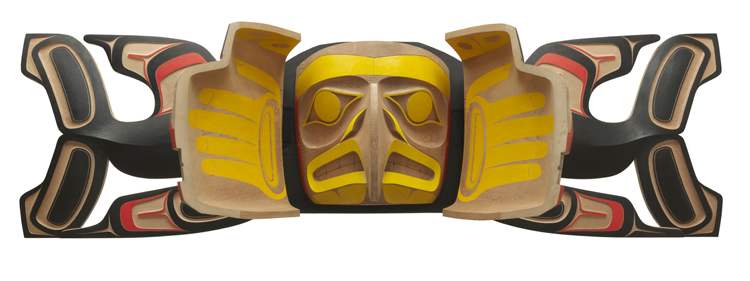Home is where the art is
Rubbing shoulders with Rembrandt might be appealing, but it's the Canadian masterpieces that shine at the WAG's blockbuster
Advertisement
Read this article for free:
or
Already have an account? Log in here »
To continue reading, please subscribe:
Monthly Digital Subscription
$1 per week for 24 weeks*
- Enjoy unlimited reading on winnipegfreepress.com
- Read the E-Edition, our digital replica newspaper
- Access News Break, our award-winning app
- Play interactive puzzles
*Billed as $4.00 plus GST every four weeks. After 24 weeks, price increases to the regular rate of $19.00 plus GST every four weeks. Offer available to new and qualified returning subscribers only. Cancel any time.
Monthly Digital Subscription
$4.75/week*
- Enjoy unlimited reading on winnipegfreepress.com
- Read the E-Edition, our digital replica newspaper
- Access News Break, our award-winning app
- Play interactive puzzles
*Billed as $19 plus GST every four weeks. Cancel any time.
To continue reading, please subscribe:
Add Winnipeg Free Press access to your Brandon Sun subscription for only
$1 for the first 4 weeks*
*$1 will be added to your next bill. After your 4 weeks access is complete your rate will increase by $0.00 a X percent off the regular rate.
Read unlimited articles for free today:
or
Already have an account? Log in here »
Hey there, time traveller!
This article was published 16/05/2013 (4520 days ago), so information in it may no longer be current.
The Winnipeg Art Gallery’s 100 Masters: Only in Canada assumes the ambitious task of telling a 500-plus-year history of European and North American art with works drawn from museums across Canada (plus the honourary province of Minnesota). The exhibition highlights the strengths of those collections, but it also reflects their limitations.
It boasts frequent highlights and represents a unique opportunity for Winnipeggers to encounter works by some of western art history’s biggest names, but it’s unclear whether 100 Masters will fully match the expectations of visitors paying as much as $25 each to see it.
“Master” is a tricky designation to start with, bringing to mind outmoded ideas of artistic accomplishment and connoisseurship (to say nothing of gender), but many of the featured artists will certainly be familiar to a broad range of audiences. Names like “Rembrandt,” “Van Gogh,” “Picasso,” or “Warhol” being virtually synonymous with “art” for many, but if those artists are iconic themselves, the works representing them are somewhat less so.

It’s ridiculous to complain about being shown a “minor” Rembrandt (in this case a quiet scene of an unnamed Biblical heroine), and even the extra-bleak little Blue Period Picasso on offer is unmistakably a Picasso. You might not have encountered this specific Monet or that exact Matisse on a coffee mug, but each is a solid representative of its maker’s best-known work (though I admittedly breezed past the muddy Van Gogh still life twice before I realized what — or rather, who — it was).
My worry, however, is that unless you already know that work, the rather modest examples may leave you wondering what the fuss is about, a risk that’s even greater when dealing with more recent, less immediately accessible work by the abstract, pop and minimal artists included in the show. Where big-name European and American “masters” are concerned, the exhibition is probably a better refresher than it is an introduction.
Where it shines, however, is in its presentation of a concise, (reasonably) complete timeline of Canadian art. This should be no surprise, since the contributing institutions are understandably more concerned with preserving this country’s unique cultural heritage than with accumulating multimillion-dollar trinkets from Europe and the States.
Works like Dominic Serres’s paintings of 1760s Halifax (based on someone else’s drawings — Serres himself never visited Canada) and Paul Kane’s 1851 view from The Forks are probably more noteworthy for their historical value than their artistry, but by the first half of the 20th century, notably with the well-represented Group of Seven and their ilk, a distinct Canadian artistic identity had emerged and would go on to flourish. Masters capably documents this process, with several excellent works by Quebec’s automatistes — who bridged surrealism and what would become abstract expressionism — being exhibition highlights, though the broad focus on painting means that more experimental works produced in Canada from the 1960s onward are largely absent.
The show reflects another strength of Canadian collecting institutions with its inclusion of numerous works by aboriginal contemporary artists. Alex Janvier’s mesmerizing Lubicon, Robert Davidson’s motorized Killer Whale Transforming into a Thunderbird, Edward Poitras’s monumental bronze Traces, and Bill Reid’s equally monumental cedar carving Wasgo, on loan for the first time, collectively go a long way towards justifying the hefty cost of admission.
And that’s the thing: come to the WAG expecting a show of “100 Masters” on par with something you’d see in New York or Paris, and you’ll probably leave disappointed. Come looking forward to seeing work you’ll truly find “Only in Canada,” and I think you’ll fare much better.
Steven Leyden Cochrane is a Winnipeg-based artist, writer, and admitted American chauvinist from Tampa, Fla.
History
Updated on Thursday, May 16, 2013 9:35 AM CDT: adds photo


